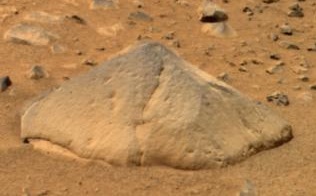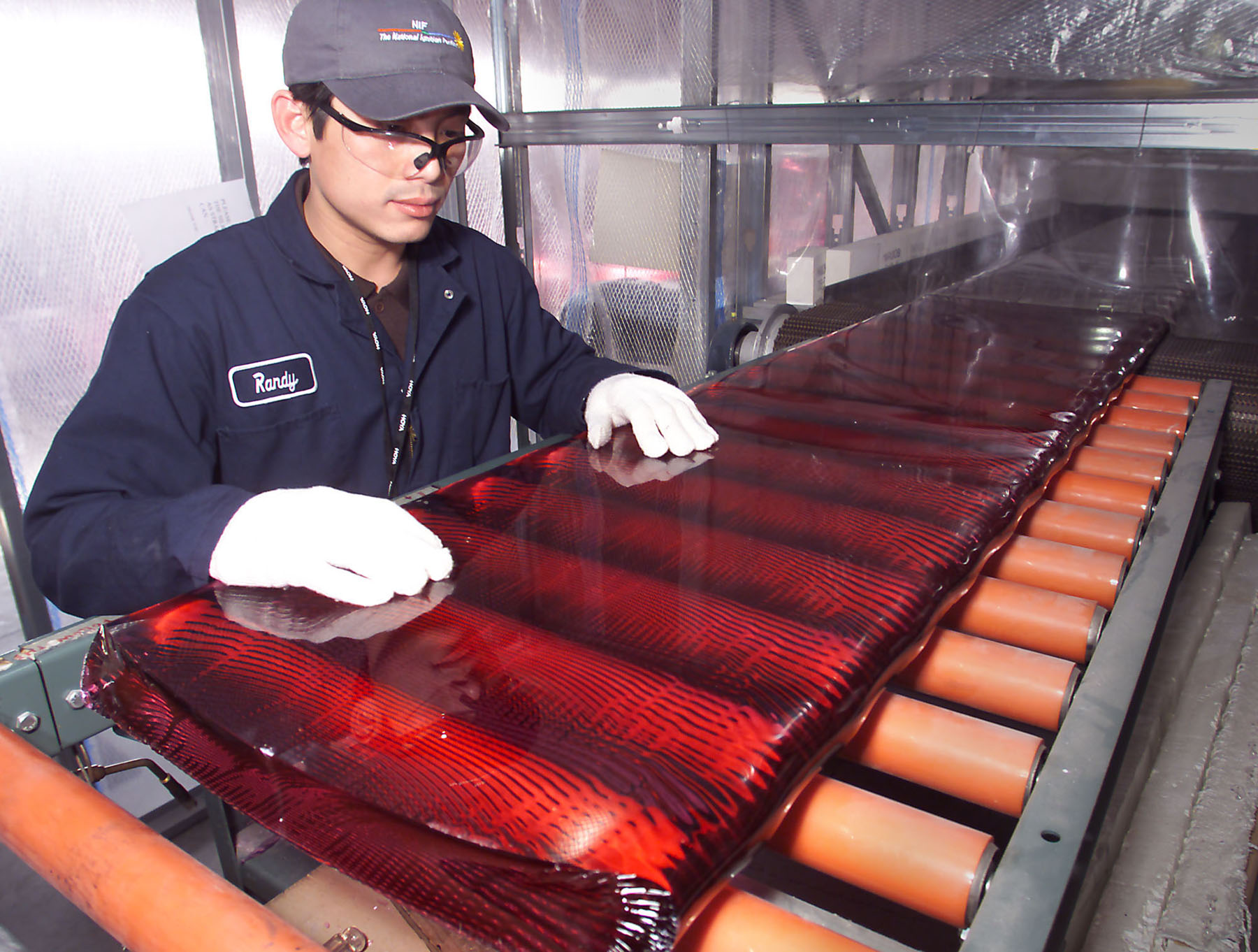|
Scanning Habitable Environments With Raman And Luminescence For Organics And Chemicals
Scanning Habitable Environments with Raman and Luminescence for Organics and Chemicals (SHERLOC) is an ultraviolet Raman spectrometer that uses fine-scale imaging and an ultraviolet (UV) laser to determine fine-scale mineralogy, and detect organic compounds designed for the ''Perseverance'' rover as part of the Mars 2020 mission. It was constructed at the Jet Propulsion Laboratory with major subsystems being delivered from Malin Space Science Systems and Los Alamos National Laboratory. The Principal Investigator is Luther Beegle, and the Deputy Principal Investigator is Rohit Bhartia. SHERLOC has a calibration target with possible Mars suit materials, and it will measure how they change over time in the Martian surface environment. Goals According to a 2017 Universities Space Research Association (USRA) report: Construction There are three locations on the rover where SHERLOC components are located. The SHERLOC Turret Assembly (STA) is mounted at the end of the rover arm. T ... [...More Info...] [...Related Items...] OR: [Wikipedia] [Google] [Baidu] |
Mars2020Rover-SHERLOC-20140731
Mars is the fourth planet from the Sun and the second-smallest planet in the Solar System, only being larger than Mercury. In the English language, Mars is named for the Roman god of war. Mars is a terrestrial planet with a thin atmosphere (less than 1% that of Earth's), and has a crust primarily composed of elements similar to Earth's crust, as well as a core made of iron and nickel. Mars has surface features such as impact craters, valleys, dunes and polar ice caps. It has two small and irregularly shaped moons, Phobos and Deimos. Some of the most notable surface features on Mars include Olympus Mons, the largest volcano and highest known mountain in the Solar System and Valles Marineris, one of the largest canyons in the Solar System. The Borealis basin in the Northern Hemisphere covers approximately 40% of the planet and may be a large impact feature. Days and seasons on Mars are comparable to those of Earth, as the planets have a similar rotation period and tilt o ... [...More Info...] [...Related Items...] OR: [Wikipedia] [Google] [Baidu] |
Mars Hand Lens Imager
Mars Hand Lens Imager (MAHLI) is one of seventeen cameras on the ''Curiosity'' rover on the Mars Science Laboratory mission. Overview The instrument is mounted on the rover's robotic arm. It is primarily used to acquire microscopic images of rock and soil, but it can also be used for other images. MAHLI can take true-color images at 1600×1200 pixels with a resolution as high as 14.5 micrometers per pixel. MAHLI has an 18.3 mm to 21.3 mm focal length and a 33.8- to 38.5-degree field of view. MAHLI has both white and ultraviolet LED illumination for imaging in darkness or fluorescence imaging. MAHLI also has mechanical focusing in a range from infinite to millimetre distances. This system can make some images with focus stacking processing. MAHLI can store either the raw images or do real-time lossless predictive or JPEG compression. Thcalibration target [...More Info...] [...Related Items...] OR: [Wikipedia] [Google] [Baidu] |
Timeline Of Mars Science Laboratory
The Mars Science Laboratory and its rover, ''Curiosity'', were launched from Earth on November 26, 2011. As of , , ''Curiosity'' has been on the planet Mars for sols ( total days; ') since landing on August 6, 2012. ''(See Current status.)'' Prelaunch (2004–2011) In April 2004, the United States National Aeronautics and Space Administration (NASA) called for scientific experiments and instruments proposals for the Mars Science Laboratory and rover mission. Launch was proposed for September 2009. By December 14, 2004, eight proposals were selected, including instruments from Russia and Spain. Testing of components also began in late 2004, including Aerojet's monopropellant engine with the ability to throttle from 15 to 100 percent thrust with a fixed propellant inlet pressure. By November 2008 most hardware and software development was complete, and testing continued. [...More Info...] [...Related Items...] OR: [Wikipedia] [Google] [Baidu] |
Scientific Information From The Mars Exploration Rover Mission
NASA's 2003 Mars Exploration Rover Mission has amassed an enormous amount of scientific information related to the Martian geology and atmosphere, as well as providing some astronomical observations from Mars. This article covers information gathered by the Opportunity rover during the initial phase of its mission. Information on science gathered by Spirit can be found mostly in the Spirit rover article. The unmanned Mars exploration mission, commenced in 2003 sent two robotic rovers, ''Spirit'' and ''Opportunity'', to explore the Martian surface and geology. The mission was led by Project Manager Peter Theisinger of NASA's Jet Propulsion Laboratory and Principal Investigator Steven Squyres, professor of astronomy at Cornell University. Primary among the mission's scientific goals is to search for and characterize a wide range of rocks and soils that hold clues to past water activity on Mars. In recognition of the vast amount of scientific information amassed by both rover ... [...More Info...] [...Related Items...] OR: [Wikipedia] [Google] [Baidu] |
Planetary Instrument For X-Ray Lithochemistry
Planetary Instrument for X-Ray Lithochemistry (PIXL) is an X-ray fluorescence spectrometer to determine the fine scale elemental composition of Martian surface materials designed for the ''Perseverance'' rover as part of the Mars 2020 mission. PIXL is manufactured and made by NASA Jet Propulsion Laboratory. Science objectives The scientific objectives of the instrument are the following: # Provide detailed geochemical assessment of past environments, habitability, and biosignature preservation potential. # Detect any potential chemical biosignatures that are encountered and characterize the geochemistry of any other types of potential biosignatures detected. # Provide a detailed geochemical basis for selection of a compelling set of samples for return to Earth. Gallery See also * Composition of Mars * ''Curiosity'' rover * Exploration of Mars * Geology of Mars * List of rocks on Mars * Mars Science Laboratory * MOXIE * Scientific information from the Mars Exp ... [...More Info...] [...Related Items...] OR: [Wikipedia] [Google] [Baidu] |
Mars Oxygen ISRU Experiment
The Mars Oxygen In-Situ Resource Utilization Experiment (MOXIE) is a technology demonstration on the NASA Mars 2020 rover ''Perseverance'' investigating the production of oxygen on Mars. On April 20, 2021, MOXIE produced oxygen from carbon dioxide in the Martian atmosphere by using solid oxide electrolysis. This was the first experimental extraction of a natural resource from another planet for human use. The technology may be scaled up for use in a human mission to the planet to provide breathable oxygen, oxidizer, and propellant; water may also be produced by combining the produced oxygen with hydrogen. The experiment was a collaboration between the Massachusetts Institute of Technology, the Haystack Observatory, the NASA/Caltech Jet Propulsion Laboratory, and other institutions. Objective MOXIE's objective is to produce oxygen of at least 98% purity at a rate of and to do this at least ten times, so the device can be tested in a range of times of the day, including at nigh ... [...More Info...] [...Related Items...] OR: [Wikipedia] [Google] [Baidu] |
List Of Rocks On Mars
This is an alphabetical list of named rocks (and meteorites) found on Mars, by mission. This list is a sampling of rocks viewed, and is not an exhaustive listing. A more complete listing may be found on the various NASA mission web sites. This listing does ''not'' include Martian meteorites found on Earth. Names for Mars rocks are largely unofficial designations used for ease of discussion purposes, as the International Astronomical Union's official Martian naming system declares that objects smaller than are not to be given official names. Because of this, some less significant rocks seen in photos returned by Mars rovers have been named more than once, and others have even had their names changed later due to conflicts or even matters of opinion. Often rocks are named after the children or family members of astronauts or NASA employees. The name ''Jazzy'', for example, was taken from a girl named Jazzy who grew up in Grand Junction, CO, USA. Her father worked for NASA and cont ... [...More Info...] [...Related Items...] OR: [Wikipedia] [Google] [Baidu] |
Geology Of Mars
The geology of Mars is the scientific study of the surface, crust, and interior of the planet Mars. It emphasizes the composition, structure, history, and physical processes that shape the planet. It is analogous to the field of terrestrial geology. In planetary science, the term ''geology'' is used in its broadest sense to mean the study of the solid parts of planets and moons. The term incorporates aspects of geophysics, geochemistry, mineralogy, geodesy, and cartography. A neologism, areology, from the Greek word ''Arēs'' (Mars), sometimes appears as a synonym for Mars's geology in the popular media and works of science fiction (e.g. Kim Stanley Robinson, Kim Stanley Robinson's Mars trilogy). The term areology is also used by the Areological Society. Geological map of Mars (2014) File:Geologic Map of Mars figure2.pdf, Figure 2 for the geologic map of Mars Global Martian topography and large-scale features Composition of Mars Mars is a terrestrial planet, whic ... [...More Info...] [...Related Items...] OR: [Wikipedia] [Google] [Baidu] |
Exploration Of Mars
The planet Mars has been explored remotely by spacecraft. Probes sent from Earth, beginning in the late 20th century, have yielded a large increase in knowledge about the Martian system, focused primarily on understanding its geology and habitability potential. Engineering interplanetary journeys is complicated and the exploration of Mars has experienced a high failure rate, especially the early attempts. Roughly sixty percent of all spacecraft destined for Mars failed before completing their missions and some failed before their observations could begin. Some missions have met with unexpected success, such as the twin Mars Exploration Rovers, ''Spirit'' and ''Opportunity'' which operated for years beyond their specification. Current status , there are three operational rovers on the surface of Mars, the ''Curiosity'' and ''Perseverance'' rovers, both operated by the United States of America space agency NASA, as well as the ''Zhurong'' rover, part of the ''Tianwen-1'' mi ... [...More Info...] [...Related Items...] OR: [Wikipedia] [Google] [Baidu] |
Curiosity (rover)
''Curiosity'' is a car-sized Mars rover designed to explore the Gale crater on Mars as part of NASA's Mars Science Laboratory (MSL) mission. ''Curiosity'' was launched from Cape Canaveral (CCAFS) on November 26, 2011, at 15:02:00 UTC and landed on Aeolis Palus inside Gale crater on Mars on August 6, 2012, 05:17:57 UTC. The Bradbury Landing site was less than from the center of the rover's touchdown target after a journey. Mission goals include an investigation of the Martian climate and geology, assessment of whether the selected field site inside Gale has ever offered environmental conditions favorable for microbial life (including investigation of the role of water), and planetary habitability studies in preparation for human exploration. In December 2012, ''Curiosity'' two-year mission was extended indefinitely, and on August 5, 2017, NASA celebrated the fifth anniversary of the ''Curiosity'' rover landing. On August 6, 2022, a detailed overview of accomplishme ... [...More Info...] [...Related Items...] OR: [Wikipedia] [Google] [Baidu] |
Composition Of Mars
The composition of Mars covers the branch of the geology of Mars that describes the make-up of the planet Mars. Elemental composition Mars is differentiated, which—for a terrestrial planet—implies that it has a central core made up of metallic iron and nickel surrounded by a less dense, silicate mantle and crust. Like Earth, Mars appears to have a molten iron core, or at least a molten outer core. However, there does not appear to be convection in the mantle. Presently Mars shows little geological activity. The elemental composition of Mars is different from Earth's in several significant ways. First, Martian meteorite analysis suggests that the planet's mantle is about twice as rich in iron as the Earth's mantle. The planet's distinctive red color is due to iron oxides on its surface. Second, its core is richer in sulphur. Third, the Martian mantle is richer in potassium and phosphorus than Earth's and fourth, the Martian crust contains a higher percentage of volatile ... [...More Info...] [...Related Items...] OR: [Wikipedia] [Google] [Baidu] |
List Of Laser Types
This is a list of laser types, their operational wavelengths, and their applications. Thousands of kinds of laser are known, but most of them are used only for specialized research. Overview Gas lasers Chemical lasers Used as directed-energy weapons. Dye lasers Metal-vapor lasers Solid-state lasers Semiconductor lasers Other types of lasers See also *Laser construction *List of laser articles This is a list of laser topics. A * 3D printing, additive manufacturing * Abnormal reflection * Above-threshold ionization * Absorption spectroscopy * Accelerator physics * Acoustic microscopy * Acousto-optic deflector * Acousto-optic modul ... Notes Further references *Silfvast, William T. ''Laser fundamentals'', Cambridge University Press, 2004. *Weber, Marvin J. ''Handbook of laser wavelengths'', CRC Press, 1999. {{DEFAULTSORT:Laser Types ... [...More Info...] [...Related Items...] OR: [Wikipedia] [Google] [Baidu] |










